Smolensk - the city of military glory
The battle that unfolded near the walls of Smolensk, in the city itself and at a distance from it, went down in history of the Great Patriotic War, like the battle of Smolensk 1941 of the year. The Battle of Smolensk is a whole complex of offensive and defensive operations of the troops of the Western, Central, Reserve and Bryansk fronts against the German fascist invaders (mainly Army Group "Center"). The battle continued from July 10 to September 10. The battle went on a huge territory: 600-650 km. along the front (from Velikiy Luk and Idritsa in the north to Loyev and Novgorod-Seversky in the south) and 200-250 km. in depth.
In July, 1941, the German command placed in front of Army Group Center (from 51 to 62,5 divisions at different times, commanded Field Marshal F. Boc) to encircle and destroy Red Army troops who were defending along the Western Dvina and Dnepr rivers. The armies of Army Group "Center" were to seize the cities of Vitebsk, Orsha, Smolensk, thereby opening up the way for further offensive against Moscow.
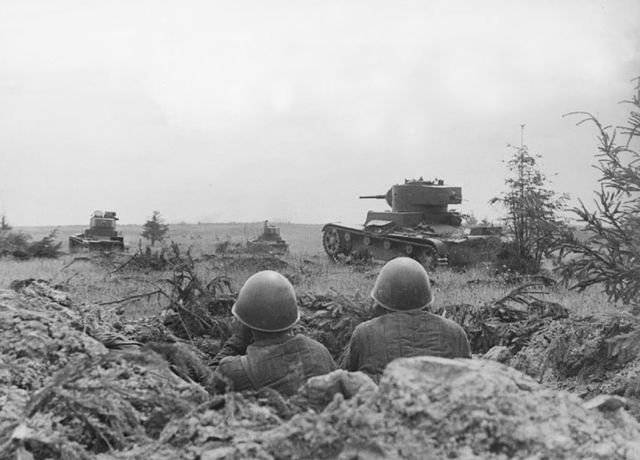
Since the end of June, the Soviet High Command began concentrating a large mass of troops of the 2-th strategic echelon along the middle reaches of the Dnieper and Zapadnaya Dvina with the task of occupying the line: Kraslava, Polotsky SD, Vitebsk, Orsha, r. Dnieper to Loev. The troops were supposed to prevent the Germans from breaking through to the central industrial area of the country and to the capital. In depth, in 210-240 km. east of the main line of defense of the Soviet troops on the front from Nelidovo to the area north of Bryansk, the 24 and 28 armies (19 divisions) were deployed. The 16 Army (6 divisions) deployed directly around Smolensk.
On July 10, 1941, the 13th, 19th, 20th, 21st I, 22nd Army (37 divisions in total). At the same time, by the beginning of the Smolensk battle, only 24 divisions of Soviet troops managed to arrive at the front from Sebezh to Rechitsa. At this time, the 2nd and 3rd German formations managed to reach the border of the Dnieper and Western Dvina rivers tank groups, and on the section from Idritsa to Drissa, infantry divisions of the 16th German army, which is part of Army Group North, managed to enter the area. The 2nd and 9th German field armies of the Center group (more than 30 divisions) were detained by battles on the territory of Belarus and lagged behind the advanced mobile formations by 120-150 km. By the time the battle began in the directions of the main attacks, the Germans had managed to create superiority in personnel and military equipment.
Stages of the Smolensk battle
Smolensk battle 1941, can be divided into 4 stages. 1 battle stage (July 10 - July 20). At this time, Soviet troops repelled enemy attacks in the center and on the right wing of the Western Front. The German 3 tank group under the command of Goth, supported by infantry of the 16 th field army, was able to dismember the 22 th Soviet army and break the resistance of the 19 th army units in the Vitebsk region. The Germans captured Polotsk, Nevel, Velizh (13 July), Demidov (13 July) and Dukhovshchina. After that, the remnants of the 22 Army took up defensive positions on the Lovati River, holding the city of Velikiye Luki, and the 19-I army fought back to Smolensk, where, together with parts of the 16 Army, it fought for the city. At the same time, the German 2-I tank group, commanded by Guderian, completed part of the encirclement of the Soviet troops in the Mogilev region, and captured Orsha with the main forces, partially Smolensk (July 16), Yelnya (July 19) and Krichev. Parts of the 16 and 20 armies were encircled, some of the forces of the 13 Army continued to hold Mogilyov, and some went beyond the Sozh River. All this time, the 21-I army led the offensive, liberated the cities of Zhlobin and Rogachev and, attacking Bobruisk and Vyhov, bound the main forces of the 2 German field army.
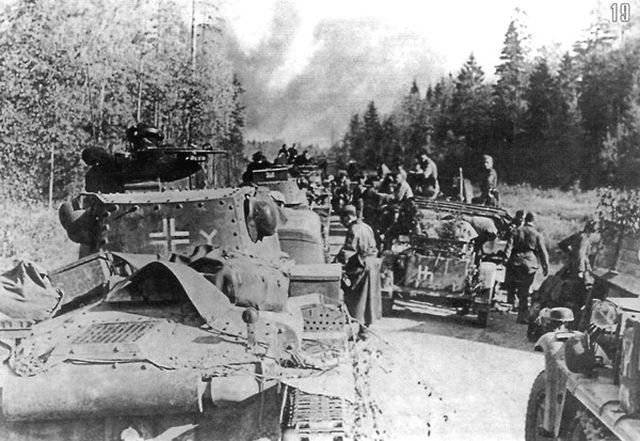
The 2 th stage of the battle (July 21 - August 7). The troops of the Western Front received reinforcements and proceeded to offensive operations in the Bely, Yartsevo, Roslavl areas in general direction to Smolensk, and in the south in the 21 Army operation zone - a cavalry group (3 cavalry divisions) began to advance in the flank and rear of the German forces Army "Center". At this time, the delayed forces 9 and 2 of the German field armies entered the battle. On July 24, units of the 21 and 13 armies were merged into the Central Front (front commander Colonel General F. I. Kuznetsov). During heavy and stubborn fighting, the Soviet troops thwarted the offensive of the German tank groups, helped the units of the 16 and 20 army withdraw from the encirclement of the Dnieper, and on July 30 forced the Army Group Center on the whole front to go on the defensive. At the same time, the High Command created a new Reserve Front, the commander of which was General of the Army GK Zhukov.
3 th stage (August 8 - August 21). The main hostilities moved south of the city to the strip of the Central and later Bryansk Front, which was created on August 16, and Lieutenant-General A. I. Eremenko was appointed commander of the front. Here, starting from August 8, the Soviet troops repelled the attacks of the German 2 and the 2 tank group, which, instead of attacking the capital of the USSR, were forced to counter the threat of Soviet troops from the south. By August 21, the Germans managed to advance on the 120-140 km., Reaching the line Gomel, Starodub and wedge between the connections of the Bryansk and Central Fronts. Because of the threat of a possible encirclement, by decision of the 19 Headquarters, August, the troops of the Central Front, as well as the troops of the Southwestern Front, which were operating south of them, retreated across the Dnieper River. At the same time, the armies of the Central Front were transferred to the Bryansk Front. The troops of the Western Front, 24-I and 43-I armies of the Reserve Front 17 of August began to launch counter-attacks in the Yelnya and Yartsevo areas, inflicting heavy losses on the enemy.
4th stage of the battle (August 22 - September 10). At this time, the troops of the Bryansk Front continued fighting with the 2nd German Army and the 2nd Panzer Group. At the same time, a massive airstrike was carried out on the 2nd tank group using the existing long-range bomber aviation. A total of 460 Soviet aircraft participated in the air raids, but failed to disrupt the advance of the 2nd Panzer Group in the south. On the right wing of the Western Front, the Germans launched a powerful tank attack in the defense zone of the 22nd Army and on August 29 captured the city of Toropets. At the same time, the 29th and 22nd armies withdrew beyond the Western Dvina River. On September 1, the Soviet 16th, 19th, 20th and 30th armies went on the offensive, but did not achieve much success. At the same time, the 24th and 43rd armies of the Reserve Front were able to eliminate the enemy’s dangerous ledge in the Yelny area. On September 10, 1941, troops of 3 Soviet fronts received orders to go on the defensive, this date is considered the official date for the end of the Smolensk battle.
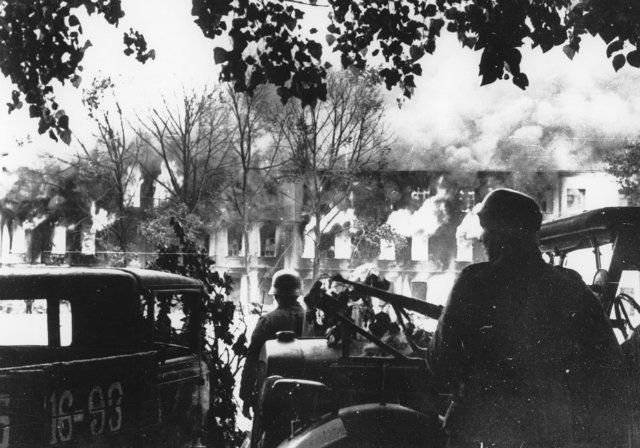
Defense of Smolensk
Recently, more and more often in many historical works, which for the most part are written off from sources of Western historiography, it is said without any explanation that the Red Army left Smolensk on July 16 on 1941 of the year. At the same time, the departure of the German troops to Smolensk and their entry into the city is by no means identical with its capture. Throughout the whole day of July 16, the Germans, overcoming the resistance of the Soviet troops and suffering substantial losses, broke through to the center of Smolensk.
By order of the city’s commandant, Colonel P. F. Malyshev, 17, July, the sappers undermined the bridges across the Dnieper. At the same time, attempts by units of the German 29 motorized division to force the river were repulsed by Soviet units. In the city of July 17-18, fierce street battles took place, during which some parts of the city passed from hand to hand several times.
At this time, the German command continued to build up forces in the Smolensk region. The 17 Panzer Division of the 2 Panzer Group of Guderian was transferred here from Orsha. At the time of the attack on the Soviet Union, the division was commanded by Lieutenant General Hans-Jürgen von Arnim, but on June 27 during the battle on the outskirts of Shklov he was seriously wounded and was able to return to the command of the division only on July 19. The successors of the general are much less fortunate. The first of them, Major-General Johann Shtrih, was killed in the battle of Orsha on July 7, and the next division commander, Major-General Karl Ritter von Weber, was severely wounded by shrapnel in July in the battle for Smolensk, July 18 died in hospital. With this fact alone, the myth of the Wehrmacht's small losses in the 20 battles of the year is refuted - in just one month of battles in only one tank division, the 1941's commanders were knocked out.
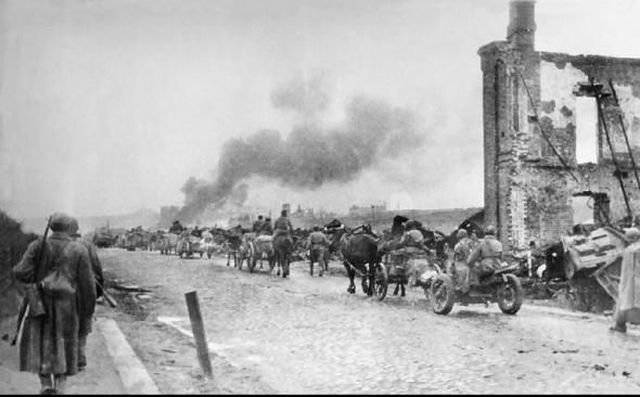
Increasing efforts, the Germans by the morning of July 19 still managed to seize the right bank of Smolensk. From the front, the Soviet units that were in the Smolensk “cauldron” crowded the units of the 5 Army Corps, which led the offensive along the Vitebsk-Smolensk highway. On July 17, this corps captured Liozno, and on July 20 occupied Rudnya after a fierce battle.
However, the Soviet units were not going to leave the city. During July 22-23, fierce battles continued in Smolensk, the Soviet troops carried out successful counterattacks, freeing quarter after quarter. In this case, the Germans stubbornly defended using flamethrowing tanks in battle, which spewed out strips of flame up to 60 meters in length. In the sky over the Soviet units continuously hung German aircraft. Very strong battles were fought over the city cemetery, which the units of the 152 rifle division occupied twice (previously, the soldiers of the 129 rifle division occupied the cemetery three times). The fighting for the city cemetery and any stone building in Smolensk were stubborn and intense, often they rolled into hand-to-hand fighting, which almost always ended with the victory of the Soviet soldiers. The intensity of the fighting in the city was so high that the Germans did not have time to carry the seriously wounded and dead from the battlefield.
At this moment, a fresh German 8 Army Corps came out to the city, which allowed the Nazis to significantly reduce the size of the Smolensk "boiler". In all the 3-s of the Soviet divisions that participated in the defense of the city, by this time the 200-300 soldiers remained in the ranks, the ammunition was running out, and the food had come to an end. At this point, the consolidated group under the command of Rokossovsky managed to repel Yartsevo from the enemy and regain lost control over the crossings across the Dnieper in the area of Ratchino and Solovyov. This fact allowed us to begin the withdrawal of the 16 and 19 units of the Soviet armies from the encirclement.
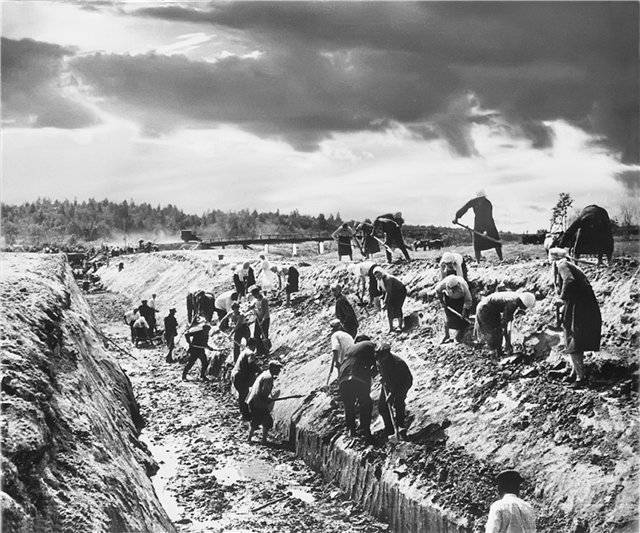
The last units of the 16 Army left Smolensk only on the night of July 29 of 1941. All of them left the city with the exception of one battalion from the 152 Infantry Division, commanded by the senior political officer Turovsky. This battalion was supposed to cover the withdrawal of the main forces of the Soviet troops from the city and with their vigorous actions imitate the presence in Smolensk of the bulk of the troops. In the future, the remnants of the battalion moved to the conduct of partisan actions.
Battle results
During the Smolensk battle, the troops showed mass heroism and unprecedented stamina. Thousands of soldiers and officers were awarded orders and medals, 14 people became Heroes of the Soviet Union. The population of the city and the region provided invaluable assistance to the Soviet troops. Only on the creation of defensive positions in the Western Front strip worked about 300 thousands of residents of the Smolensk region. In addition, from the number of volunteers in the Smolensk region, 26 fighter battalions and militia brigades were formed.
Also, a guard was revived near Smolensk. At the final stage of the battle in the elimination of Yelninsky ledge, the Soviet guard was born. The first four rifle divisions (100, 127, 153, 161), which particularly distinguished themselves in battles with the Nazi invaders, were given the title of "Guards". This title has become a pride for all the soldiers and officers of the Red Army. In the future, all parts of the army were trying to earn this title.
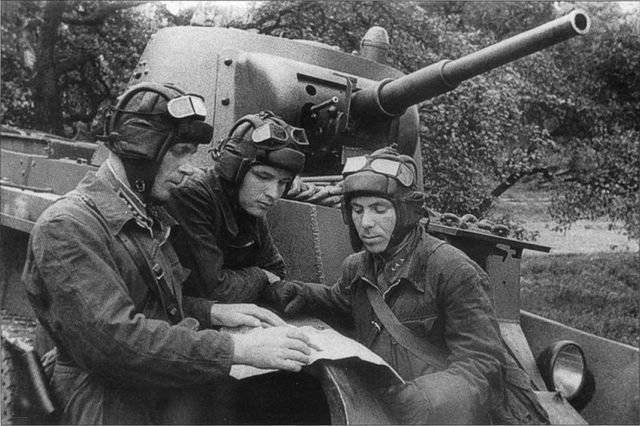
The Smolensk battle of July-September 1941 was an important stage in the breakdown of the German Blitzkrieg plan against the USSR. With their heroic actions and the price of great sacrifices, the Soviet units stopped the Army Group Center and forced it to go on the defensive in the Moscow direction at the end of July 1941. The Soviet troops managed to forge the main forces of the 3 tank group, which was planned to be used to strike at Leningrad. As early as July 1941, the fascist German command had to use half of its own strategic reserve (10,5 from 24 divisions) to strengthen its army group Center.
It is worth noting that the price paid by the parties in the battle of Smolensk, was quite high. Soviet irretrievable losses amounted to 468 171 people, sanitary - 273 803 people. Significant were the loss of the Germans. By their admission, by the end of August 1941, only tank and motorized divisions had lost half of their equipment and personnel, and total losses amounted to about 500 thousand people. In the Battle of Smolensk, the Red Army fighters managed to gain that experience, without which it was very difficult to fight against a strong and organized enemy.
Information sources:
-http: //www.opoccuu.com/160711.htm
-http: //smolinfo.net/index.php? option = com_content & view = article & id = 1715 & Itemid = 572
-http: //www.biograph-soldat.ru/OPER/ARTICLES/007-smolensk.htm
-http: //ru.wikipedia.org/wiki
Information